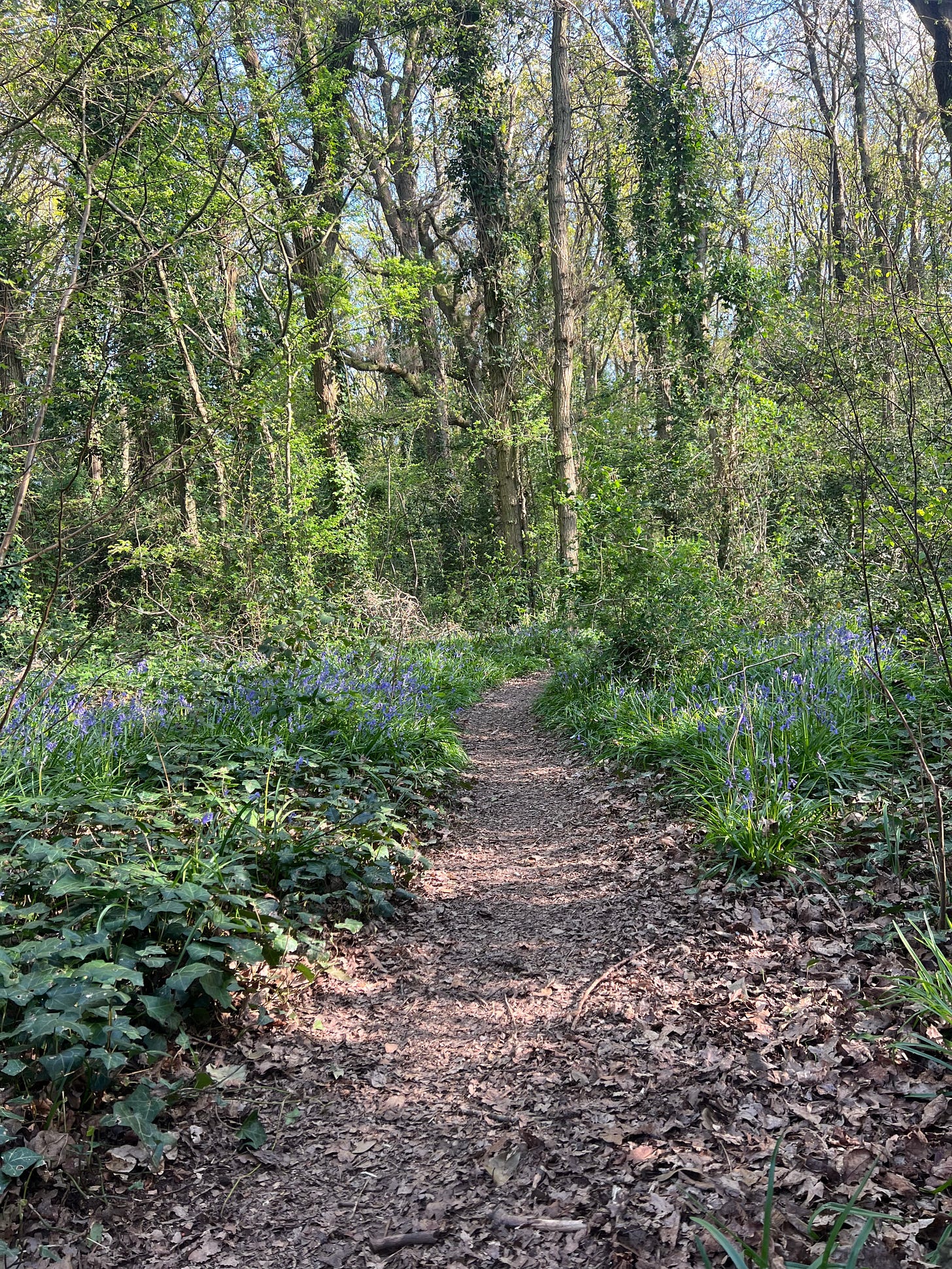Consistent exercise and AuDHD don’t go together - or do they?
Let me tell you about what might work, in less than 5 minutes
It’s not complicated, I promise.
No matter how burnt out you were, I bet you have you tried coming up with fancy exercise schedules!
You did the research into what’s the most suitable sport for ADHD or autism or our favourite: AuDHD?
(Photo credit to the author - go and find some bluebells out there folks)
You also tried lots of new things:
You joined the gym
You joined a running club
You tried a completely new sport
You bought all the equipment
You went along for a week or two, only to abandon it later
Am I right?
Because I’m talking from experience, of course it’s the novelty: it’s interesting to think about doing something and unfortunately for this condition we know that thinking about something will likely give us more dopamine than actually doing the said thing.
And I don’t know about you, but I think this is a serious problem because we can’t change how this brain works.
We need to come up with suitable software updates that will go around all the hardware problems.
So here’s one idea that I found have consistently and I mean CONSISTENTLY managed to cut through ALL the potential pitfalls that you can think of.
I go for a walk.
I know this simple but hear me out. if you’re like me you have several co-morbid chronic physical health conditions that appear to come in a package with ADHD or autism.
We are talking chronic pain,chronic fatigue,hypermobility, you name it.
So it’s hard to say that we live in a body that’s able to do a lot . sometimes that’s true but other times it’s not so I found that if I want to be able to engage in some movement that can be relatively consistent therefore I can trust it it has to be something that is accessible.
Step one:
find something that you’re familiar with
something that is accessible at all times
in all weathers
any time of day
anywhere you go and even when you’re on a day where your pain levels are bad .
For me this is walking, occasionally it’s cycling, but walking meets all the criteria.
I can do it anywhere and I can go slow. I can go fast. It depends what type of day I’m having.
Step two:
It cannot be boring, but at the same time it has to have some sort of routine to it. It can’t or just be you because then you know autistic part freaks out.
So I tackle the non-boring bit by adding practices of noticing nature which has been proven to elevate mood and well-being.
I give myself the option to pick a route and also decide whether I want to add any music, whether I want to chill out or speed things up.
Whether I want to listen to an audiobook or a podcast or whether I borrow a dog or go with a friend.
Now you can see that immediately there’s lots of options to play around with. In order for this to not to be overwhelming, I have developed different routes that I can trust, so instead of trying a new route every single time or going somewhere where I need to walk, I do have low impact and low executive functioning needed routes.
This means that just need to put shoes on and go.
I don’t take water. I take a key that’s it and more often than not 15 minutes circling around the nearby Crescent.
Step three:
Enjoy the fact that you did it because just look how much effort this takes.
Make room for it as best you can. Make it more of a pronounced practice, don’t discount the fact that it’s low impact or it’s “just” walking - or whatever you choose to do.
If you’re burnt out recovering perfectionist self is chipping in with advice ,that this doesn’t count as exercise and I might have to talk to that part just reminded that times have changed and 20 minutes outside in the fresh air moving your body is much better than 20 minutes feeling paralysed on the sofa, don’t you think?
P.s.
I highly recommend using the app for nature noticing, created by Melissa Harrison -
https://www.encounter-nature.com/


